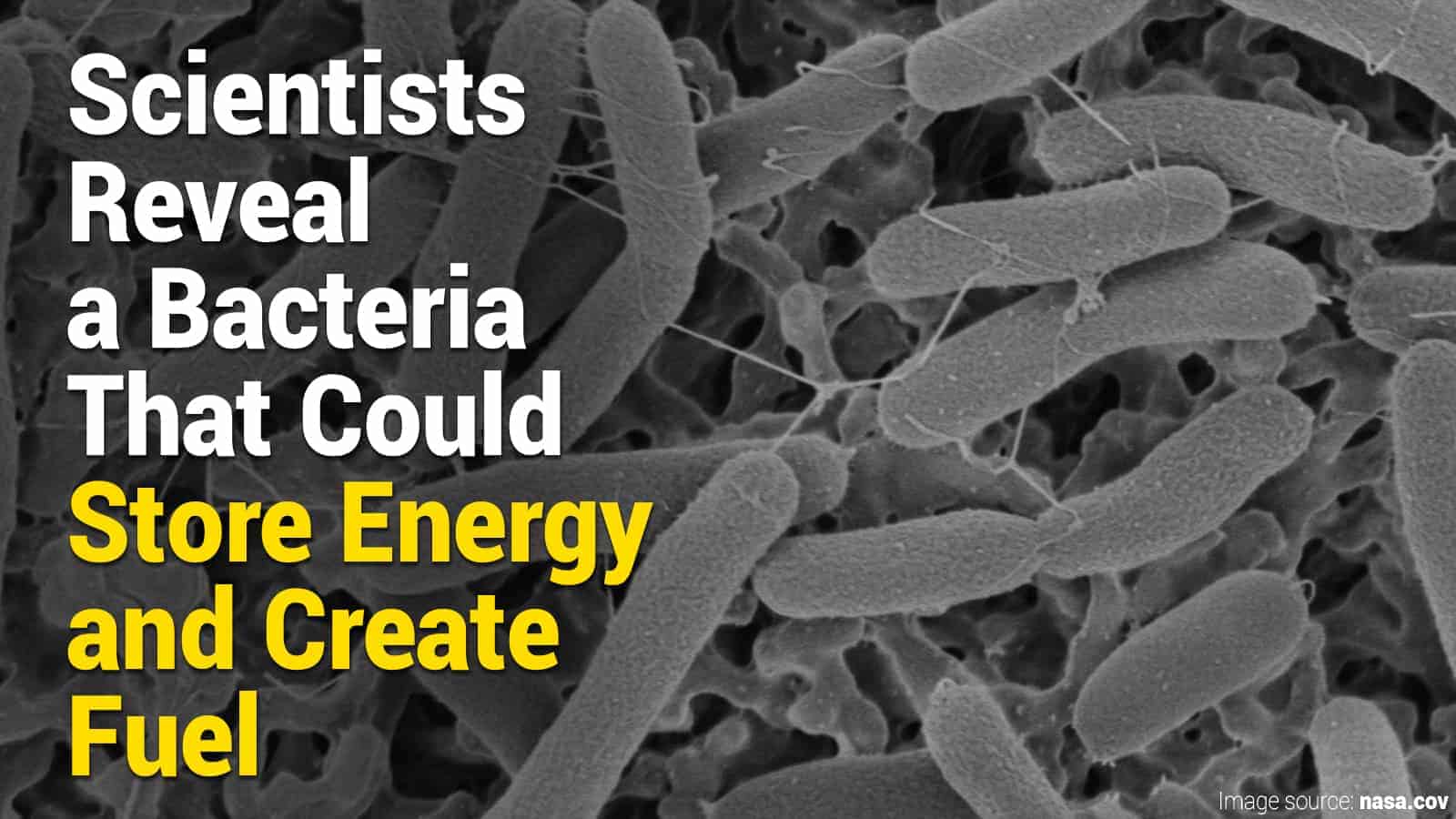Researchers from Cornell University have discovered a bacteria capable of synthesizing complex, energy-dense organic molecules from CO2 and renewable energy. This could provide an affordable, eco-friendly, scalable system to store and retrieve energy from renewable sources like wind and solar. In fact, no sustainable methods currently exist to store and capture green energy, as batteries harm the environment. We need a way to create fuel that’s clean and safe.
Now a kind of bacteria called Shewanella oneidensis might provide a solution. The microbe uptakes electrons into its metabolism and uses the energy to create essential precursors for ‘fixing’ carbon. This process occurs when plants or organisms utilize carbon from CO2 and add it to an organic molecule, usually sugar.
Scientists have been working on genetically engineering a new bacteria that can do even more than store energy. The bacteria would use precursors from carbon to make organic molecules, like biofuels.
The study, published August 11, 2021, in Communications Biology, explains for the first time how bacteria converts energy into metabolism.
“There are only a very small number of microbes that can really store renewable electricity,” said Buz Barstow, assistant professor of biological and environmental engineering in the College of Agriculture and Life Sciences and the paper’s senior author. He explained that even fewer microbes could effectively fix CO2.
“We want to make one,” Barstow said. “And in order to do that, we need to know the genes that are involved in getting the electrons into the cell.”
How a bacteria could help store and create fuel
For the study, researchers used a method called ‘knockout sudoku,’ which the team designed to help inactive genes one at a time. This way, they could isolate them and better understand their functions.“We found a lot of genes that we already knew about for getting electrons out of the cell are also involved in getting electrons in,” Barstow said. “Then we also found this totally new set of genes that nobody’s ever seen before that are needed to get electrons into the cell.”
First author Annette Rowe, Ph.D. ’11, an assistant professor of microbiology at the University of Cincinnati, made an important discovery. She identified a pathway called extracellular electron uptake (EEU), which moves electrons into the bacteria’s metabolism. As a result, this pathway efficiently converts carbon dioxide into sugars and biofuels. In fact, scientists believe it could become mass-produced and cheaper to run in the future.
In their research, the team found similar genes in many different bacteria. This brought them to conclude that bacteria may have used a similar pathway before life on Earth developed photosynthesis. They would’ve utilized electrons from oxidizing iron to take carbon from CO2 to make sugars.
“When we build a microbe that can eat electrons, which we are doing now, it will incorporate those genes,” Barstow said.
Other uses for Shewanella bacteria
Barstow will add the genes to the common bacteria Escherichia coli (E. coli) to start the process. Genetically engineered bacteria fueled by electrons could provide a low-cost method of making biofuels, food, and chemicals and even sequestering carbon.
Prior research found that the Shewanella bacteria can serve as “living electrodes” for controlled radical polymerization. NASA may even use this versatile bacteria to produce energy and clean wastewater in its spacecraft in the future. When scientists first discovered the bacteria in 1988, it was the only known microbe able to breathe by transferring an electric charge to metal outside its cell membrane.
NASA sent a batch of Shewanella to the International Space Station (ISS) in 2018 to observe how they behave in space. The data collected helped NASA learn what these organisms need to thrive in space and how astronauts can utilize them. As a result, the experiment laid the foundation for future life-support systems and lengthy missions into space.
According to John Hogan, a scientist who oversaw the space station experiment, the bacteria has other applications. These include making fuel or electrolysis cells that would utilize genetically engineered microbes as catalysts on their electrodes. Next, the fuel cells could help process wastewater while generating energy. The microbes could then convert the waste into products like edible biomass, medicines, and bioplastics.
Hogan said this:
“The fuel cell is just a tool to make products we’re interested in. On one side, you’re making energy, and on the other side, you’re making products. That’s one of the reasons it’s interesting.”
This bacteria may prove useful for a variety of industries and functions in the future. So perhaps we’ll one day power our homes and businesses using fuel created from these very microorganisms. While these bacteria can create energy, other types of bacteria can remove excess energy.
How E. coli bacteria could lower carbon dioxide levels
As carbon dioxide and other greenhouse gas levels continue to rise, scientists worldwide have been sounding the alarm. Recently, they discovered that E. coli bacteria might provide a solution to the climate crisis. Israeli scientists found that these bacteria could help remove carbon from the atmosphere. The team spent over ten years genetically engineering the bacteria to “eat” CO2 and convert it to other forms of energy.
Researchers say that E.coli may also help save the planet in other ways. Indeed, the team believes their findings will expand the bacteria’s products to include biofuels, food, and other substances. Scientists already use E.coli to produce synthetic versions of life-saving medicines like insulin and human growth hormone.
Final Thoughts: A bacteria might help us store and create clean fuel
Most people only think of bacteria as harmful organisms that cause deadly diseases. However, it seems they aren’t just evil invaders of our immune systems; they may actually help save our planet. Scientists have found that a bacteria called Shewanella oneidensis can store and retrieve renewable energy. The genetically engineered bacteria could also have other applications like producing food and chemicals and even capturing carbon.
Along with the E.coli bacteria, these microbes could solve the greatest challenge in our modern times. Climate change will undoubtedly cause suffering, but we have a better chance of surviving it by working with nature to create fuel from bacteria.


















